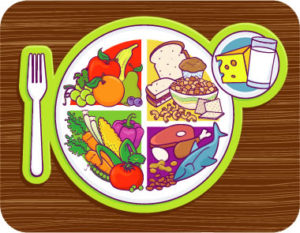I am a very food focused individual. I am a pretty good cook and I love to eat. In order to facilitate our weekly family meals, I do a large grocery shopping trip to stock the freezer and pantry with staples. I also visit the grocery store several times a week, if not every day, to pick up any additional items I need once I have been inspired to cook specific things. While I was dwelling on what we had already eaten this week, and what we had already in the fridge, freezer and pantry, I had the thought that this planning was really no different than the project management I do on a daily basis.
I’m blending interests to and telling you about the five characteristics I look to create in both.
- Inventory – Before you go grocery shopping, you need to determine what ingredients you need. When you first get involved with a project, you need to do an inventory as well. In this case, the inventory allows you to assess what you have and what you need in order to make the project successful. At a minimum, your project inventory should include answering the following questions:
- What is the business goal?
- What product or solution was sold to the customer?
- Does an existing solution meet the need?
- What was the committed timeframe?
- Who is on the project team?
- What tools do you have? need?
- What is the budget?
- What are the risks?
- What are the success criteria?
- Variety – I believe in variety in food. This week alone we’ve eaten meals inspired by Italy, Latin America and the United States. In the project context, variety comes most often in the form of the project team. Ideally, my project team is very well rounded. It should include customer stakeholders who understand the business, as well as customer stakeholders than have the technical expertise to help validate and work through technical issues. Additionally, my project implementation team has a variety of skills, whether it be backend and fronted developers, or a data integration/developer and analytics resource. It also helps to have someone to bridge the gap between the technical solutions we are implementing and the customer’s business. Hopefully this me, but sometimes I have to leverage the subject matter experts.
- Balance – I’m a bit of stickler for offering a balance dinner plate. I try to always have at least one protein, starch and vegetable option at dinner. Sometimes, I succeed in getting more, and others it doesn’t happen at all. It’s important to create balance in your projects. Most often this refers to the balance established between the budget, scope and schedule. It’s the job of the project manager to set expectations and deliver a solution that meets the business goals.
- Budget – This one is probably the most obvious. It is a really good idea both in meal planning and in project management to know your budget. Sometimes, it’s small so you have take shortcuts and make different choices than you would if your budget was large. In the end, it really doesn’t matter what the number is. You need to make sure you know what it is, and drive the conversation around making the choices needed to stay within it (or increase it if you are so lucky.)
- Value – It makes me happy when my family and friends enjoy the meals I cook. Every new recipe gets evaluated based on a simple scale of 1) do again, 2) never do again or 3) make some changes and we’ll try it again, but reserve the right to scratch it off the list. A project must have a mechanism for determining completion and value. If there is no defined finish, you risk the never-ending project. And if the project never ends, how do you know if it has created value for the customer. Make sure you have established the success criteria you need to delivery the value you promised.
I hope you enjoyed my blending of my interests. It’s time now to go manage some client projects before heading into the kitchen to cook dinner.
